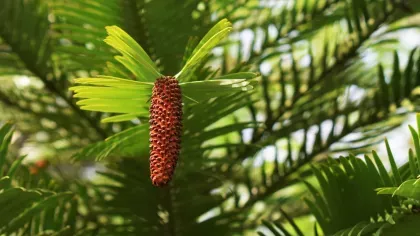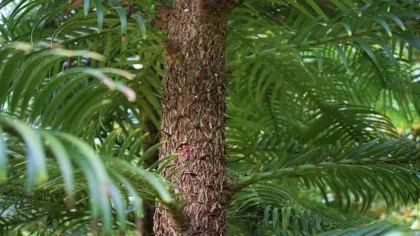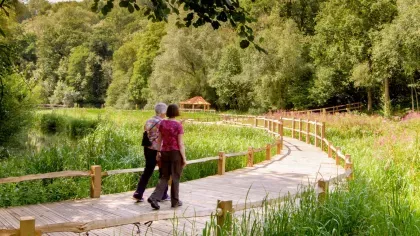5 August 2024
Wonderful Wollemi: the curious conifers
How Wollemi pines, thought to be extinct, were given a new chance at survival.

Dinosaur trees
Back in 1994, Field Officer David Noble was exploring the Blue Mountains of eastern Australia when he came across a small group of Wollemi pines (Wollemia nobilis). This remarkable family of trees was the last remnant of a species that once formed vast forests across Australia, New Zealand and Antarctica, in the age of the dinosaurs. Fossil records show traces of the ‘dinosaur tree’ living 200 million years ago, with experts estimating they became extinct between 70 to 90 million years ago.
This finding is considered one of the greatest botanical discoveries of our time. The species are now classified as critically endangered on the IUCN’s red list, with around 80 mature trees and 30 seedlings growing at what is now the Wollemi National Park in Australia.

Arriving at Kew
A few years after the trees were rediscovered in Australia, they were propagated and distributed to a few botanic gardens worldwide, including Kew and Wakehurst, to ensure the best chances of survival.
Did you know? Wakehurst is home to 15 of the first-ever Wollemi pines introduced to the UK.

Wollemi in the nursery
For the first three years of their lives, Wollemi pine seedlings were grown in the safety of Wakehurst’s Nursery, carefully nurtured by our expert staff. Every centimetre of growth was recorded, and weather data was captured whilst we kept a close eye on the colour of their foliage, looking for any signs of disease or effects from climatic conditions.
Once the Wollemi grew roots, they were gradually re-potted into specialist pots with holes in the side to promote strong, fibrous root growth. When ready, they moved to their new home at Coates Wood, happily growing at a rate of 30cm a year.
Travel back in time and see these dinosaur giants for yourself, now at an impressive height of over 8 metres.
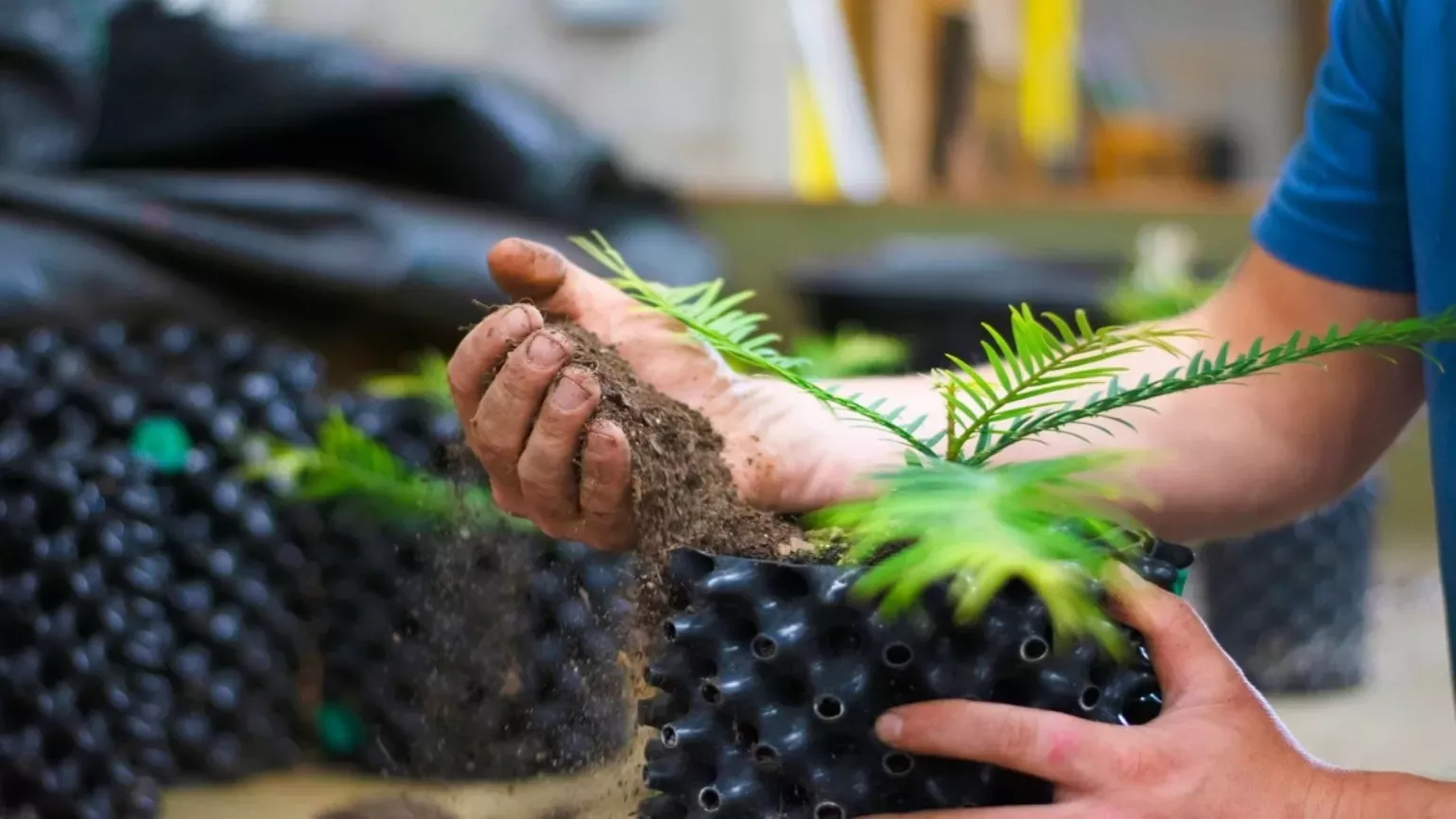
.jpg6a26.webp)
After a few years planted in the landscape, the Wollemi started to come into flower, so seeds were collected and safely stored at the Millennium Seed Bank, with some kept for germination testing.
Despite an average of 187 seeds growing in one cone, seed viability can sometimes be just over 10%, meaning these threatened species require extra special care!
Making a meta-collection
Marking a major next step in the Wollemi timeline, a new genetically diverse meta-collection is beginning life across Europe.
Over 170 young Wollemi pines grown in the Botanic Gardens of Sydney were shipped from Australia, to be looked after at the Bedgebury National Pinetum and Forest in Kent. At an event last autumn, botanist and broadcaster James Wong planted six of these critically endangered trees, whilst the remaining saplings were distributed to 28 botanic gardens across the UK and Europe, including Wakehurst.
Much like the other destinations, Wakehurst was chosen as a new home for the Wollemi due to the suitable climate and success of the current collection in Coates Wood, where growing Wollemi can adapt to the changes ahead.
Across the continent, they create a meta-collection, a unique resource shared by organisations, to research and monitor the Wollemi pines, safeguarding their existence.
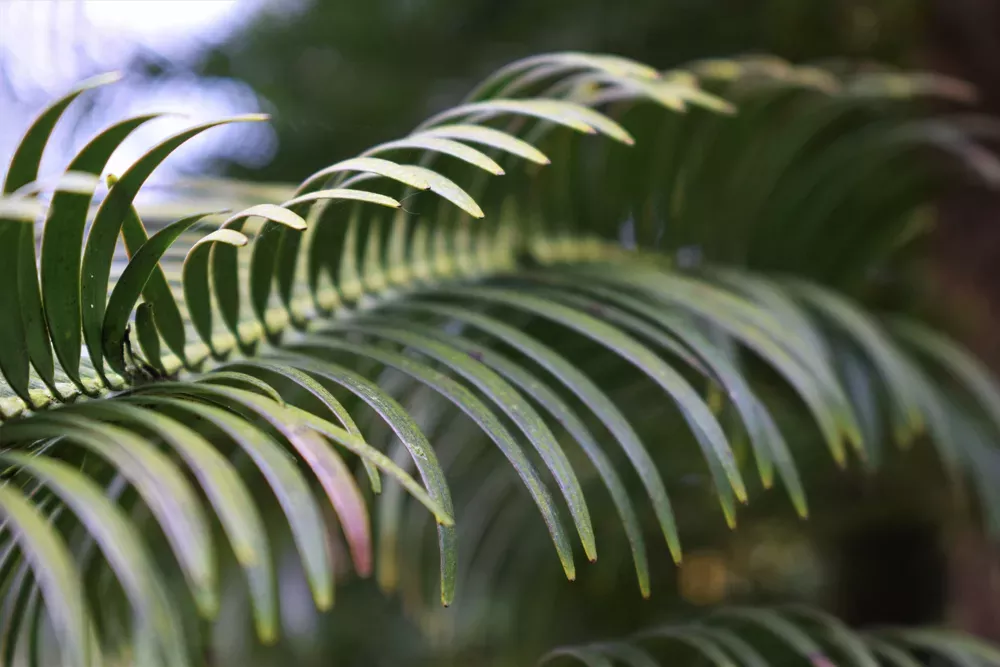
Wollemi at Wakehurst
Roaming through Coates Wood, you’ll be greeted with our towering family of Wollemi pines, a symbol of decades of conservation effort and millions of years of survival.
Not found in your everyday garden, Wollemi are adorned with light green needle-like leaves, which become yellower as they age. Seeds are contained within male and female cones, both occurring on the same tree, but with differing features. The more rounded female cones appear on higher branches, whilst their male counterparts are paper-thin and browner in appearance.


To preserve itself in the colder months, a white waxy coating develops over growing buds. This adaption is thought to have helped Wollemi survive many ice ages throughout history.
Whilst walking through Coates Wood, look out for their native neighbours, such as eucalyptus, with its stripy bark and distinct menthol fragrance, and beautiful southern beech trees (Nothofagus), a broadleaf evergreen with round, toothed leaves.
The importance of conservation
However, the fight against extinction isn’t over.
In January 2020, the world's last wild Wollemi pines were saved by firefighters in the Australian Blue Mountains, as wildfires threatened their native habitat.
Whilst the fires burnt through more than 10 million hectares of land, fewer than 100 Wollemi pines narrowly escaped destruction.
Events such as these not only show the catastrophic impact of climate change but are a reminder of the importance of protecting living collections such as this, and banking seeds as an insurance policy for the planet.
The support of members helps us to research and protect endangered species such as Wollemi pines, helping us to build a greener and more diverse future for all.

